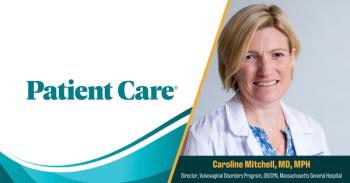
Rethinking Supplemental Oxygen: Physicians, Patients, and Caregivers Weigh In

DALLAS--Supplemental oxygen helps patients with lung disease manage better day-to-day, but according to speakers gathered at the ATS meeting in Dallas this week, it can also add to disease burden.
DALLAS--Supplemental oxygen has been shown in clinical trials to help patients with lung conditions, such as chronic obstructive pulmonary disease (COPD) and interstitial lung disease, but being dependent on supplemental oxygen day-to-day can be a challenge. In a session titled “Rethinking Oxygen: Getting the Right Oxygen to the Right Patient,” at the American Thoracic Society Meeting 2019 held May 17 – 22, 2019, in Dallas, Texas, the trials and tribulations of using supplemental oxygen were discussed by physicians, patients, and caregivers.
Jerry A. Krishnan, MD, PhD, Professor of Medicine and Public Health at the University of Illinois Hospital & Health Sciences System noted that when patients are on clinical trials, and particularly trials that have shown the benefit of supplemental oxygen, they also benefit from support not available to patients not involved in clinical research.
For example, COPD patients who received supplemental oxygen in the Nocturnal Oxygen Therapy
A patient's perspective
Heather Kagel was diagnosed with familial pulmonary fibrosis in February 2013 and provided her first-hand experience as a supplemental oxygen user. She described 3 common challenges that supplemental oxygen users face: traveling with oxygen, using oxygen at home, and exercising with oxygen.
What it takes to travel
To travel by air, patients are required to use a portable oxygen concentrator (PCO), and most PCOs have little to no continuous flow options. “If you are a user that relies on a continuous flow, as opposed to a pulse flow, you really are very restricted in your air travel,” said Heather. To travel long distance by car, a patient must notify a supplier in advance in the destination city to be able to rent equipment and may need to stop along the way to change out oxygen tanks, making sure to arrive within a company’s normal business hours-typically 9 am to 6 pm, Monday through Friday.
Travel with supplemental oxygen can be costly, as well. Renting a portable oxygen concentrator, arriving without enough advanced notice, or dropping off equipment outside of normal business hours all come with additional fees. “It’s not just the access to the equipment itself," that can be a problem, Heather said. "It's [also] the financial means to be able to have that access.”
Oxygen at home
As for using supplemental oxygen at home, some patients use tanks, which can be very heavy and to refill them may require either a home fill machine or delivery of new tanks. If tank delivery is required, Heather explained, patients often have to stay home all day, “hoping” that the company shows up.
Heather, like some patients, uses a portable oxygen concentrator at home, which for her is an out-of-pocket cost of several thousand dollars. But having the concentrator at home can be a financial risk; it may not be used for very long because of disease progression. “There are people who pay several thousand dollars and get very little use out of that machine,” she said. “So, it can be a gamble.”
Oxygen with exercise
Finally, while exercise is encouraged for people with lung disease, supplemental oxygen demands vary and they may require different types of oxygen. “[It’s] difficult to find the right machines at the right time with the right output,” Heather said. In addition, insurance companies require detailed explanation of why a patient may need various supplemental oxygen devices. “You have to really be a patient advocate for yourself,” she said.
Caregivers also feel the burdens of supplemental oxygen use, explained Jeffrey Swigris, DO, MS, Associate Professor, Department of Medicine at National Jewish Health in Denver, Colorado. “When we prescribe supplemental oxygen, it’s a really big deal,” he said. “When oxygen comes into the house, it disrupts the whole homeostasis of that house, and potentially disrupts the homeostasis of the relationship between patients and caregivers.”
Newsletter
Enhance your clinical practice with the Patient Care newsletter, offering the latest evidence-based guidelines, diagnostic insights, and treatment strategies for primary care physicians.































































































































































































































































































































